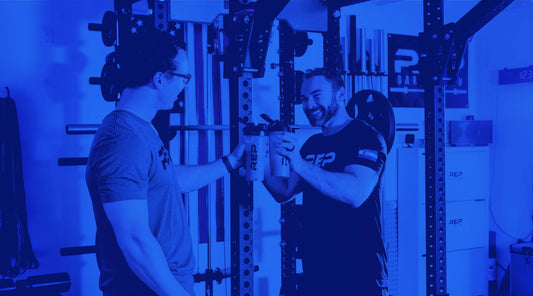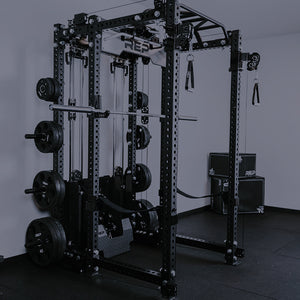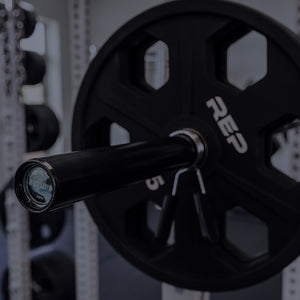
In the world of fitness, misinformation can be just as prevalent as sweat and determination. From misconceptions about the best ways to lose fat to myths about the effects of different types of exercise, it's easy to get lost in a sea of conflicting advice.
To help you navigate workout facts vs. fiction, here’s a look at 10 of the most common fitness misconceptions – so you can understand what truly works and what doesn’t.
Myth 1: Cardio is the Best Way to Lose Fat

Reality: While cardio is crucial for heart health and calorie burning, it’s not the only — or necessarily the most efficient — method for fat loss. Strength training provides:
Increased Metabolic Rate: Strength training boosts your resting metabolic rate because muscle burns more calories than fat. More muscle means more calories burned throughout the day, even at rest.
Afterburn Effect: Strength training creates a higher afterburn effect (EPOC) than cardio, meaning you burn more calories for up to 48 hours post-workout as your body repairs and builds muscle.
Muscle Preservation: Cardio can lead to muscle loss, slowing your metabolism. Strength training helps preserve and build muscle, maintaining a higher metabolic rate and contributing to a fit and healthy appearance.
Body Composition: Strength training improves body composition by helping you lose fat and gain or maintain muscle, leading to a more defined physique.
Hormonal Benefits: Strength training boosts hormones like growth hormone and testosterone, which aid in fat loss and muscle gain. It also improves insulin sensitivity, enhancing fat loss.
Sustainability and Enjoyment: Many find strength training more enjoyable and varied than cardio, making it easier to stick with long-term, which is crucial for sustained fat loss and fitness.
Functional Strength: Strength training enhances functional strength, making daily activities easier and reducing injury risk.
Myth 2: Lifting Weights Makes Women Bulky

Reality: Many women avoid weightlifting because they fear becoming too muscular. However, women typically have lower levels of the hormones that cause muscle hypertrophy, specifically testosterone, which makes it difficult to gain large amounts of muscle mass. (Just ask any natural female bodybuilder fighting to put on size.) Instead, regular strength training for women can lead to a “toned” appearance (psst, that word just means muscular), increased strength, and a higher metabolic rate without bulk.
Myth 3: You Can Target Fat Loss in Specific Areas

Reality: The idea that you can lose fat from specific parts of your body by targeting them with exercises is known as "spot reduction." This is a myth. While targeted exercises can strengthen and build muscle in specific areas, fat loss is determined by genetics and overall body fat reduction.
The best approach to losing fat in specific areas is a whole-body fitness routine coupled with a smart calorie deficit (i.e. making sure you are eating the proper macronutrients – ahem, protein -- to help your body recover).
Myth 4: No Pain, No Gain

Reality: The belief that pain is a necessary part of effective exercise is not only false but also potentially dangerous. While muscle soreness can be a natural response to resistance training, especially if you're new to it or changing your routine, actual pain can be a sign of injury. Effective training should challenge you, but not cause pain during or after exercise. Listening to your body is key; discomfort is normal, but pain is a warning sign.
Also, soreness is not necessarily related to how effective a workout was. Soreness comes from microscopic tears in muscle fibers, typically due to unfamiliar or intense exercises. However, a well-designed workout can still be highly effective without causing soreness, especially as your body adapts to the exercises over time. Factors like proper form, gradual progression, and balanced routines are more crucial for long-term fitness gains than the presence of soreness, which can be influenced by individual differences and recovery practices.
Myth 5: The More Exercise, the Better

Reality: No days off is for chumps; more exercise is not always better. Overtraining can lead to fatigue, decrease performance, disturb sleep, and even cause injuries. Balance in training is crucial. This includes adequate rest days to allow muscles to recover and grow stronger. Read more about why rest days are important here. Ideally, your workout plan should include varied intensities and activities to keep it sustainable and effective.
Myth 6: Supplements Are Necessary for Building Muscle

Reality: While some supplements can aid in muscle growth and overall health, they are not essential for everyone. A supplement is just what its name suggests: something you can take in addition to a healthy diet. A balanced diet rich in proteins, fats, and carbohydrates can meet most of your nutritional needs naturally. (Also, you may want to talk to a healthcare provider before adding supplements to your diet.)
Myth 7: You Must Sweat for a Workout to Be Effective

Reality: Sweat (like soreness) is not a reliable indicator of workout effectiveness. Sweating is your body's way of regulating temperature, not necessarily an indicator of calorie burn or fitness level. Some people sweat more than others due to genetic factors or environmental conditions. The focus should be on the intensity and consistency of your workouts, not the amount you sweat.
Myth 8: Stretching Before Exercise Prevents Injuries

Reality: The benefits of stretching before exercising are widely debated. Dynamic stretches are recommended to warm up the body and prepare the muscles for physical activity, which can prevent injuries. However, static stretching before a workout when the muscles are not yet warm may actually increase the risk of injury. Save static stretches for after your workout, when your muscles are warm and more pliable.
Read more about how to properly warm up before lifting weights here.
Myth 9: Machines are Safer Than Free Weights

Reality: Exercise and cable machines can be great to help guide movements correctly, but they often target isolated muscles rather than engaging multiple muscle groups like free weights do. Both machines and free weights have their places in a fitness regimen, and one is not necessarily safer (or better) than the other. Proper form and technique are what determine the safety and effectiveness of your workout.
Myth 10: Volume is Volume. Doing 100 Reps in a Row Provides the Same Effect as Doing 10 Sets of 10.

Reality: Doing more reps all at once promotes an adaptation from your body that is greater than if you do 10 sets of 10 over a longer period of time (or throughout the day), according to pro bodybuilder and coach Connor Kovacs. Changing your physique is about forcing your body to do something it’s never done before, he says, whether that’s lifting something heavier, lifting it more times over a shorter period, or changing your diet and cardio.
Whatever it is, you must force your body to do something it’s never done before to spark change. If you can do 10 push-ups in a set easily, doing that 10 times throughout the day is just doing 10 easy things; it’s not forcing any type of stimulus for your body to adapt to, Kovacs says.

Bottom line: Understanding facts about fitness and recognizing popular myths, as well as the truth behind these common fitness misconceptions, can help you make more informed decisions. By focusing on scientifically-backed methods and listening to your body, you can achieve your fitness goals safely and effectively.
FAQs
No exercise after Botox: myth or fact?
The theory is that exercising too soon after getting injectibles such as Botox may cause the injection to migrate due to increased blood flow and/or pressure, plus the potential for bruising at the injection site. While the research on how soon you can workout after getting injectibles such as Botox is limited, most dermatologists recommend waiting 4 hours before you lay down and 24 hours before you do any strenuous exercise.
Can stretching help you burn calories to gain muscle?
Stretching isn't going to burn a significant amount of calories, but it can improve your range of motion, which may enhance your form during muscle-building movements. Also, burning calories isn't a surefire way to gain muscle — muscle growth happens with progressive overload, adequate protein intake, and recovery. However, incorporating stretching into your routine can support better mobility and help reduce injury, which means you'll be able to train more consistentently and effectively over time.

NEWSLETTER SIGNUP
Product launch information, promotions, blogs, and REP news.







